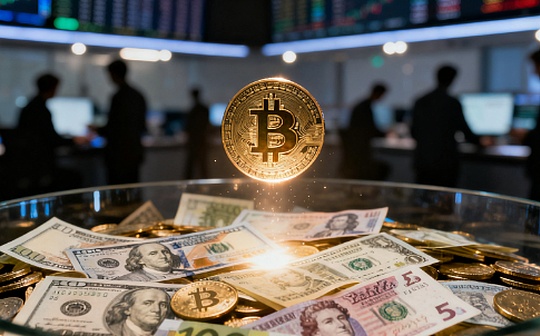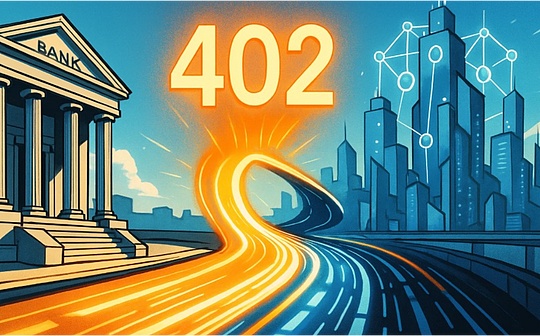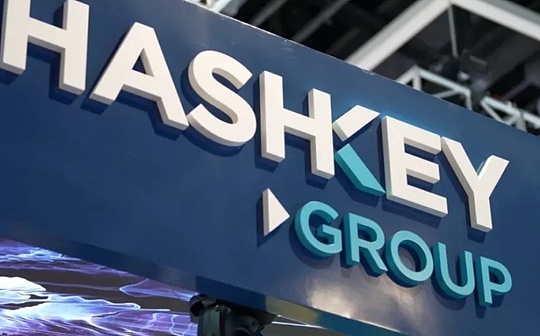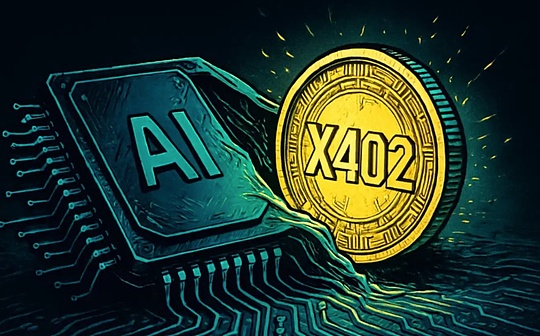
Author: kyle watch & amp; tanay ved, coin metrics researcher; translation: Bit chain vision Xiaozou
With the comprehensive improvement of market conditions, digital assets rebounded sharply in 2023; as Bitcoin spot ETF is about to be released, the institutional interest is also accelerating.Looking forward to 2024, we will see many important development and progress.The report of this issue will show you how we look at some of the most noteworthy trends in the digital asset industry in 2024.
1,Spot goodsETFarrival
After ten years of hard work, the spot Bitcoin ETF has entered the last step in the US financial market. Well -known publishers such as BlackRock and Fidelity Investments are expected to launch related products in 2024.The long -awaited spot ETF approval may have a greater impact on the digital asset market in the next few years.
As the industry expects that the US Securities and Exchange Commission (SEC) will approve ARK & AMP; 21SHARES Bitcoin ETF. The earliest deadline is January 10th.EssenceHowever, the details of the first round of approval and the exact release date are still unclear.It is generally believed that in order to avoid being accused of favors who will approve multiple issuers at the same time, just as when the Ethereum Futures ETF was launched last fall.At present, 11 major spot ETF application agencies are expected to be approved in the next week.The release of spot ETFs also involves many different aspects, such as the estimated scale of ETF inflow, competitive dynamics between ETF issuers, and the mature market structure of Bitcoin.Some publishers have begun marketing offensive, while other issuers hope to gain a competitive advantage in the minimum charges.How this fierce competition will develop is still uncertain.
We believe that the consideration of supply dynamics on the Bitcoin chain is also very important, which may develop in the medium term, and the data of Coin Metrics can provide the greatest help in this regard.Bitcoin supply is easy to audit and track on the chain, which helps it to become a unique financial asset.Anyone who runs Bitcoin nodes can track the whereabouts of all Bitcoin and track the transfers.This enables us to infer the behavior, supply distribution, activity address, and many other chain indicators of holders. These indicators are impossible to be calculated for those more opaque assets.An important trend in parallel with ETF is that the proportion of long -term holders of Bitcoin has continued to rise.As shown in the figure below, more than 6 million BTCs (30%of the total supply today) have not been moved within five years.We believe that the BTC in these dormant state has not been included in Bitcoin’s “free floating” supply.
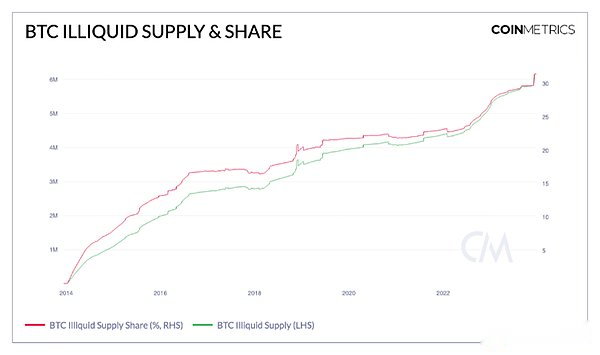
In addition, in 2023, only 30%of BTCs are in a state of activity, and most BTCs have not been touched.However, do not excessively simplify the decisive factor of BTC prices. This is very important, because this is a dynamic variable affected by many unknown factors, but this increasing non -fluidity plus an influenza to ETF may be possible.Squeeze the market to encourage more supply to enter the liquidity market.
There are many other factors worthy of attention.The confrontation force will shake the pattern of the shore cryptocurrency exchange. A certain ETF may attract buyers to leave the spot exchange through lower costs and less friction.But at the same time, the coinbase and other exchanges will benefit as an ETF custodian agency.More widely speaking, it is expected that this ETF will enhance and confirm the legitimacy of digital assets. As the industry continues to mature, it may bring benefits to the US exchanges.In the context of market emotional improvement around ETF, Coinbase’s average daily spot transaction volume has jumped to more than $ 2 billion.At the same time, the significant increase in CME Bitcoin Futures has not been closed, reflecting that the market structure focusing on the US financial market is changing.
The development of this change is coming soon, and this year may marked the transformation of digital assets from Rocky to emerging assets.As Berlaide and other companies are also applying for Ethereum ETF, ETH products are expected to be approved and will be attracted by the industry participants in 2024.However, the Bitcoin ETF will be the first to be listed in one year. At the same time, another major supply event will become the leading narrative of Bitcoin in 2024: the next Bitcoin will be halved.
2The fourth Bitcoin is halved
One of the core values of Bitcoin is the proceduralness of its monetary policy.Every 210,000 Bitcoin blocks, or about every four years, the number of newly issued Bitcoin will be reduced by half. This situation is called “halved”.It is expected that the digging Bitcoin block 840,000 will be excavated in April this year. The reward of the new mining block will be reduced from 6.25 Bitcoin to 3.125 Bitcoin.A key milestone, because its circulation has undergone index attenuation on the road to the final supply of 21 million Bitcoin.
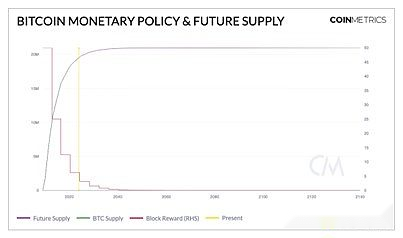
Although a halving incident is a predictable factor in Bitcoin, it still has an important impact.The first is the influence of Bitcoin miners. They are motivated to invest funds and energy to protect network security in exchange for Bitcoin.The revenue of the miners comes from the new BTC issuance, and the reduction of the half of the incident will reduce the issuance of BTC and reduce the cost of the trader’s payment (Bitcoin block space demand function).Calculated in the US dollar, the total revenue of absenteeism will almost decrease, and its economic benefits will be affected. At the same time, the profit margin of operators with high energy costs and low hardware efficiency will also be squeezed.
To put it simply, if half of the time occurs in April 2023, the miners will receive a total revenue of $ 6.8 billion instead of $ 10.3 billion last year.However, the rise of BTC prices at the end of the year and the recovery of the toll market in 2023 are helpful to miners, which shows that halving does not necessarily mean that the annual USD revenue is half a year.Nevertheless, as the hash rate reaches a record high of 500 EH/S or more, miners are competing to achieve a scale economy and modernize their ASIC equipment to continue to succeed after the mining incident.
Just as in the past halving incident, the impact on the dynamics of the reduction on Bitcoin’s supply and demand, and whether the reduction in this circulation has been “reflected in the price”, it may cause a series of disputes again.Some people think that Bitcoin halves is the inherent procedure in the agreement rules and a incident that has been fully understood in advance -especially by more and more professional institutions that study Bitcoin.On the other hand, some people explain why Bitcoin halves from the perspective of traffic. They pointed out that after Bitcoin is halved, the sales of miners (Bitcoin’s natural sellers) will decline.They also believe that the reduction of Bitcoin can strengthen the currency attributes of Bitcoin and increase Bitcoin into a reliable value storage method, which attracts new interests by the attention brought by the minus incident.
The market may feel the impact of halving related emotions throughout 2024.Most of the attention will be on the profitability of absenteeism, and it will trigger a new round of discussion on the needs of Bitcoin’s final turn -based absenteeism -based revenue model.However, the halving this time also corresponds to a critical moment in Bitcoin history, that is, the spot ETF is listed in the United States.Although the future results do not necessarily reflect the past situation, the history of Bitcoin echoed the EPOCH half -year minus EPOCH.This new EPOCH is also significant.
3As well asEIP-4844Battle with the expansion of the smart contract platform
Layer-2 (L2) solution is indispensable in solving the scalability of Ethereum. For example, high GAS fees and limited transaction throughput will affect the user experience, especially in block space, especially in block spaceDemand is strong.L2 solution, such as Optimistic and ZK-Rollup, bundled multiple transactions into a “RollUp”, then process these transactions under the chain, and use Layer-(L1) network as the “data available data available data available data available for settlement and security.layer”.This method helps reduce the average transaction costs on the main network from about 8 US dollars to about $ 0.01 on the L2 platform like Arbitrum.However, with the rapid popularity of Rollup, the relevant costs of storage data on the chain have become the focus of discussion, and it is also a key step in the development of Ethereum (see the EIP-4844 part below).
Bridge has played an important role in this transition, promoting the flow of assets between the Ethereum main network and the L2.As shown in the figure below, the standardized Optimistic and ZK Rollup bridges have a large number of ETH and ERC-20s (such as USDC and USDT) are locked in the bridge contract, which reflects that the transaction demand on the L2 network is growing.Although Optimistic Rollups such as ARBITRUM and Optimism have the largest bridge-receiving asset share, 1.3 million ETH and 33,000 ETH, as the Base of Coinbase, ZK-ROLLUP (zero knowledge), and the launch of specific applications optimized for specific cases, the launchThe L2 field will continue to grow.
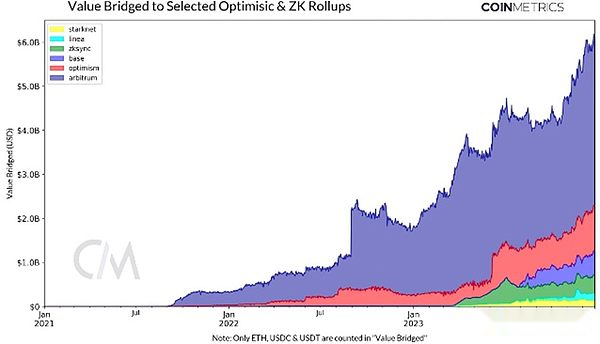
The key step of this transformation is “Dencun” hard fork, which may be activated in the second quarter of 2024.Through the Ethereum Improvement Proposal (EIP) 4844 (“Proto-Danksharding”), this upgrade is designed to introduce the concept of “Blob-Carrying Transactions”.Store a large amount of data at a lower cost on the Ethereum L1 (data availability) at a short time.It is expected that this will reduce Rollup’s operating expenses, and at the same time further reduce the transaction cost of L2, eventually increase the economic feasibility used in Ethereum, and unlock new use cases.
Although the roadmap centered on Rollup and the expected Dencun hard fork made certain progress, the long -term efficiency of the Ethereum ecosystem and the problems of user experience in the Ethereum ecosystem have not been resolved.The complexity and standardization of asset bridges, coupled with the rapid growth of decentralized users and liquidity Rollup, highlight the importance of interoperability between ecosystems.Because Ethereum uses a modular method to reduce its limitations, it is also facing the potential challenges that allocate certain activities from the first floor. This transformation may affect the Ethereum main network trajectory and ETH utility.Although some criticisms are reasonable, the Ethereum ecosystem will still maintain a leading position in many important aspects in 2024, including stable currency liquidity, DEFI activities, total user payment, and other indicators.
However, the recovery of the ALT L1 blockchain such as Solana and Avalanche, such as the L2 route of Ethereum -the recovery of the ALT L1 blockchain such as Solana and Avalanche -975%and 300%of returns in the whole year, and once again concentrated people’s attention in the concentration of people’s attention inTheir architecture is weighed.The focus of the discussion will compare the single method (such as Solana) with the modular method of Ethereum. The former will unify the execution, data availability and consensus in a single layer, while the modular method of Ethereum split some of them.Function.This contrast is the core of the relevant discussion of the smart contract platform, and it will continue to affect the discussion of their respective dominant positions, and ultimately penetrate the discussions on the weighing of the pros and cons of scalability, user experience, security, and application ecosystems.
Obviously, in terms of expanding the smart contract platform, many competitive work is being carried out; however, whether a family will be unique, it will still coexist in multiple solutions, which is not clear now.It is also unlikely to give an exact answer in 2024.However, the demand for block space is significantly huge. As we will see in the next section, a large number of emerging applications will seek reliable and low cost block space in 2024.
4, Stable currency,RWA(Real World Assets) and emerging applications
(1) Stable currency and stable currencyCBDC
In the past year, stablecoin has been a central topic, and we believe that the same is true in 2024.In 2023, affected by incidents such as Silicon Valley Bank’s failure, more than 120 billion US dollars of stabilized currency market experienced a large shuffling, which affects the development trajectory of stable coins supported by the two largest fiat currency, namely Tether and the offering on the shoreUSDC, its supply is the opposite trend.However, although some market share was lost in 2023, the USDC publisher Circle was considering listing in the United States in 2024. Its business was greatly boosted by rising interest rates in 2023. At the same timeexpansion.At the same time, in 2024, the stabilized currency industry will continue to expand in general to consolidate its value proposition in the digital asset ecosystem and the strong product market.
There is a good proof of this expansion, that is, the new stable coins are adopted, such as Pyusd, Société Générale’s eurcv supported by PayPal, and protocol native stable coins like AAVE GHO.This trend is not only reflected in the increasing types of stablecoins -from legal support to cryptocurrency support -but also reflected in the diversity of issuers, including payment and financial institutions.In addition, assets under the chain of the U.S. Treasury bonds, ETH and liquidity pledged token (LST), interest -supported coins supported by mortgagers on the chain (LST), are receiving attention.Although it is still in the initial stage and has their own different risks, the interest rate calculation and stable coins are expected to make the continuously developing stable currency ecosystem more and more colorful.
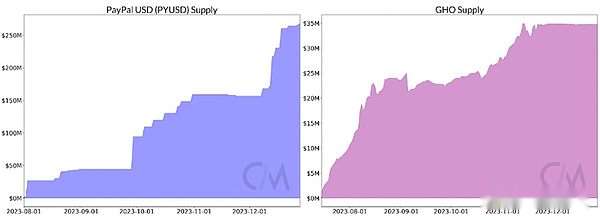
The rapid rise of stable currency on public blockchain is also the continuous research and development of the central bank’s digital currency (CBDC).As some countries such as Brazil want to launch CBDC in the new year, in 2024, it may provide a new perspective for comparison between without licenses and centralized digital financial infrastructure.
(2.RWAReal world assets
As we predicted in 2023, the real -world asset (RWA) ecosystem has increased significantly in the past year.These are promoted by two major assets in this field, that is, tokenization and private credit of public securities. Both themes are committed to the gap between traditional financial and digital asset economy.Although the tokens of public securities have brought a huge market for traditional financial assets such as U.S. Treasury bonds and achieved academic visits in the region, private credit projects meet the needs of emerging economies by obtaining low -quality credit.In 2023, the market size of tokensized U.S. Treasury bonds exceeded 500 million US dollars, partly because the Fed’s interest rate hike cycle increased the attractiveness of “risk -free” interest rate benefits, supporting ONDO OUSG and other projects, so that the market value of OUSG reached 175 millionThe US dollar, and boosted MakerDao’s income.Fast settlement time, higher transparency and lower operating costs are part of the value proposition brought by the blockchain. As the opportunity expands to other financial instruments such as stocks, private equity market funds, and real estate, the blockchain is helping to accelerateThe development of this trend.
Looking forward to the future, Coinbase’s L2 network base and other measures will promote the growth of the RWA field.”Project Diamond” uses Base’s expansion capabilities, Coinbase’s wallets and hosting services, and Circle’s USDC stabilization coins, aiming to create a regulatory capital market for digital financial instruments.Similarly, the “Project Guardian” collaborated by Morgan Chase, Apollo, and the Singapore Financial Administration also reflects financial institutions’ interest in the increasing interest in tokens.Although some RWA measures are running on blockchain without permission and limiting their entire potential, the expansion of this field on public blockchain has great prospects.
5, Pledge and decentralized finance (Defi.
In the Ethereum DEFI ecosystem, the liquidity dusted after the SHAPELLA was upgraded, and the Beacon chain had nearly 29 million ETH, and the LIDO managed approximately 32%(9 million ETH) of the total amount.This chain revenue is a reward for verification networks, which improves ETH’s attractiveness of ETH as a productive capital asset.The L2 bridge like BLAST has further exacerbated this trend to get idle ETH pledge.The EIGENLAYER main network launched in 2024 will introduce the RestAKing mechanism to allow the use of pledged ETH as other networks (such as data availability layers, Oracle or bridges) to guide economic security.use.Although RESTAKING will provide greater incentives through higher yields, it can also magnify smart contracts, operators and penalties without relevant risks, which makes RESTAKING a key theme of 2024.
In a wider DEFI ecosystem, we expect that the decentralized exchange (DEX) and borrowing agreement will play a key role in 2024, especially the expected UNISWAP V4 will enter the field.The new iteration will create custom mining pools and trading strategies through the reduction of “HOOKS” and GAS costs (promoted through DENCUN upgrades).As the agreement becomes more common, they will provide greater flexibility and control of risk management, which may make some complexity externalization, but it will also cater to wider audiences and various use cases.
6As well asAIFusion with encryption,DepinAnd consumer application
The impact of blockchain on non -financial applications is increasing, just like decentralized physical infrastructure (DEPIN).Through tokens to promote resource sharing in fields such as Filecoin, network infrastructure (Helium) and calculation (Akash), access to these basic resources is becoming more and more democratic.This is also very important in the field of artificial intelligence. It can support the entire region to participate in the current computing market currently led by technology factories. At the same time, it is also more secure and credible to make the content or data generated by artificial intelligence through blockchain privacy solutions.The integration of these breakthrough technologies is an exciting development trend.
Games and social media will also increase by the promotion of account abstraction (simplified wallet interaction and transaction process), thereby improving the user experience.The development of L2, especially the specific game L2 (such as IMMUTable), makes frequent low -value transactions (including the purchase and NFT use) more feasible.Although the market has surpassed Opensea and the growth of the Bitcoin network, the NFT field has undergone a trough and continuously changing the NFT field, but this field has great potential in strengthening the interaction between the brand or artist community.The bull market will re -attract people’s interest in consumer application ecosystems and promote the mainstream adoption of blockchain technology.
7, Supervision and policy outlook
In the past year, the encryption field has encountered a series of regulatory challenges in the United States, and a more optimistic political environment will be very popular.There are some progress in terms of policy, and the digital asset market participants will continue to seek clear regulation.There is a bright progress in the United States, that is, the more active encryption user base in politics. FAIRSHAKE Super PAC (Political Action Commission) successfully raised $ 78 million to support candidates who support blockchain technology in the 2024 US election in 2024.EssenceThe legal lawsuit between Coinbase and SEC will also be an important area worthy of attention. Oral debates between Coinbase and SEC lawsuits will be held on January 17.Just like Ripple and GrayScale’s lawsuits, the result of this struggle may have a profound impact on the encryption industry and may affect international regulations.Although several jurisdictions in the world have made significant progress in crypto policies, such as the UAE and the European Union (its MICA regulations will take effect in 2024), other jurisdictions still have a long way to go.
8,in conclusion
The digital asset market will develop in 2024.The launch of the expected spot ETF is an important milestone in Bitcoin’s relatively short but far -reaching history.Today, 15 years ago, Bitcoin Creation Block came out, bringing a new concept of currency to the world.


